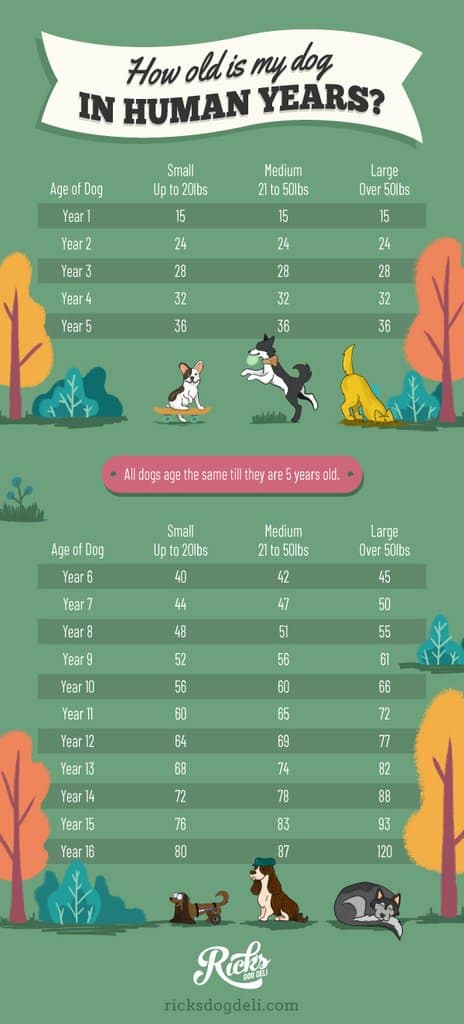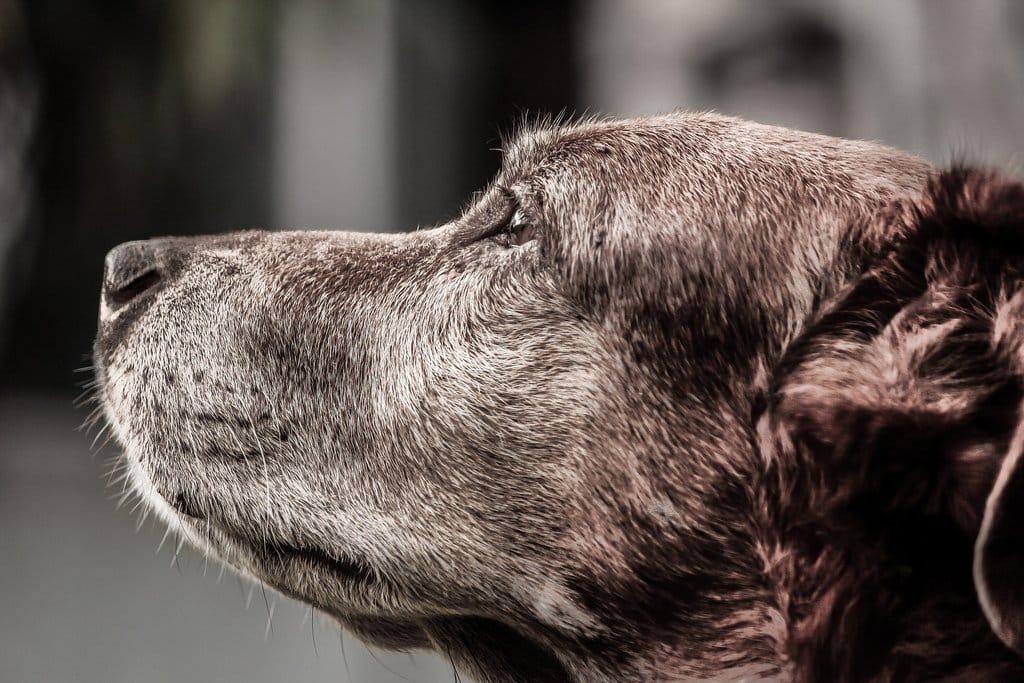They might be your “baby,” but they’re still growing up.
Let’s find an answer to the question, “How old is my dog?”
If you’ve ever owned a dog, you’ve probably noticed that they age a lot differently than humans do.
Three weeks after birth, puppies are alert, active, and trying to climb over everything in sight. A three-week-old infant, on the other hand, still sleeps for much of the day.
These differences ultimately come down to human and dog DNA, but it can also make it difficult to determine how old your dog is in human years.
You may have heard that calculating dog years to human years is as simple as multiplying two numbers, but the answer is a bit more complicated.
Luckily, we’ve put together an age chart for dogs that breaks it down for you.
How Old Is My Dog?
For the first five years, all dogs mature at the same rate. At their first birthday, a puppy will have reached mid-adolescence, or about the equivalent of a 15-year-old human.
By the time dogs are five, they are 36 in human years (even if they still have all that leftover puppy energy!).
By the time they reach six, however, they are essentially “middle-aged”—and this is where dogs start to age differently.
Dog Breeds and Aging
You probably noticed that the dog age chart above gives different numbers for different sized dogs.
Large dogs tend to age faster than small dogs and thus have a shorter lifespan.
For example, the average lifespan of a Great Dane is between 8-10 years. Chihuahuas live longer—between 12 and 20 years.
Before you can figure out your dog’s age, you’ll need to know their approximate weight (or at the very least, whether they are a small, medium, or large breed).
How to Tell a Dog’s Age…By Teeth
Of course, no dog age chart can help if you don’t know how old your dog is in human years. And if you adopted your furry friend from a shelter (thank you!), you probably have no idea when your pup was born.
Animal shelters and rescue organizations can make guesses, but sometimes these estimated ages can lean toward the “younger” end of the scale to make the dog more adoptable.
Your vet should be able to give you a better idea of your dog’s age at their next appointment, but if you can’t wait until then, you can find clues by looking at your dog’s teeth.
If you have a puppy whose teeth haven’t completely come in, a vet’s age estimate should be extremely accurate. Puppies lose their baby teeth (yes, just like children do!) at a fairly consistent rate that should make it easy to determine their age.
But if you have an older dog, this can be a little more complicated.
Just as with humans, a dog’s genetics, habits, and diet can all play a role in the condition of their teeth. A dog who never received adequate dental care will likely have more wear and tear on their teeth than one who gets regular brushings and good nutrition.
Still, there is an average progression that can act as a baseline if you’re trying to guess your dog’s age.
- By six months, a dog’s baby teeth have all been replaced with permanent teeth, which should be clean, white, and healthy-looking.
- By 1-2 years, teeth may appear a little less white and the back teeth may even have started to yellow.
- By 3-5 years, there will probably be tartar and wear on all teeth.
- By 5-10 years, you may notice signs of tooth disease.
- By 10-15 years, you will notice heavy wear and tear, tartar buildup, and perhaps even a few missing teeth.
Even if this information doesn’t help you determine your dog’s age, it will show you the importance of good dental care. A good calcium supplement can help your puppy develop strong teeth and bones so that they (hopefully) don’t lose those teeth later.
Here at Rick’s Dog Deli, we add calcium to our meals in the form of eggshells. Eggshells are 95% calcium, which is essentially the same as taking a calcium supplement. (Of course, the shells are very finely ground, so your dog won’t be able to feel or even taste them.)
For another tasty dental hygiene option, our bones are a great way to clean excess tartar from the teeth.
Why Is It Important To Know My Dog’s Age?
Your love for your dog won’t change based on their age, so why bother calculating it?
Well, part of caring for your dog is knowing how to respond to their natural aging process. Your kids will eventually grow up, take care of you, and ultimately outlive you, but a puppy will be a senior dog before your baby goes to college.
Knowing your dog’s age can be a good motivation for taking them to the vet regularly to check for age-related diseases such as cancer, diabetes, or kidney disease.
Your dog’s nutrition and dietary needs may also change as they age.
In addition to needing a diet that caters to their health issues, your older (and possibly more toothless) dog might require softer, more nutritious, and more easily digestible food.
Conclusion
Answering the question “How old is my dog?” doesn’t just satisfy your curiosity, it can give you a heads up on the changes that will impact your dog’s life.
Dogs have different needs at different stages in their life, and these changes are often based on their unique genetic makeup.
At Rick’s Dog Deli, our meal formulations are specially created with your dog in mind. Our Signature Meals have been prepared with the utmost attention to holistic nutrition, and our Therapeutic Meals can help alleviate the symptoms from allergies, excessive weight gain, and digestive issues.
And if your dog needs an entirely different approach, we will work with your vet to create a custom recipe just for them.
We are always available to answer any questions you might have regarding your pet’s health and wellness. For more information, give us a call or drop by the Deli!



